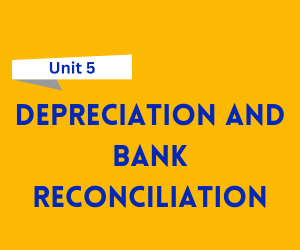Welcome to Unit 5 of Financial Accounting, where we dive into two important business arrangements — Consignment and Joint Venture. This unit introduces you to the accounting treatment, key features, and practical applications of both these topics. These are crucial for students who want to understand how collaborative and outsourced business models are recorded in financial books.
Let’s explore both topics in detail 👇

Download Unit 5 – Consignment & Joint Venture Accounting Notes
Get your Unit 5 notes in a simplified, exam-oriented format:
⬇️
Download Unit 5 Notes PDF
What is Consignment?
Consignment is a business arrangement where the consignor (owner of goods) sends goods to the consignee (agent) to sell on their behalf. Ownership remains with the consignor until the goods are sold.
Key Features of Consignment:
Ownership remains with the consignor
The consignee only acts as an agent
Unsold stock is returned or held by the consignee
Profit or loss belongs to the consignor
Commission is paid to the consignee for selling
Accounting Treatment
In the Books of Consignor:
Goods sent on consignment → Consignment A/c Dr. To Goods Sent on Consignment A/c
Expenses incurred → Consignment A/c Dr. To Bank/Cash A/c
Sales made by consignee → Consignee A/c Dr. To Consignment A/c
Commission to consignee → Consignment A/c Dr. To Consignee A/c
Profit or loss transferred to P&L A/c
In the Books of Consignee:
No entry for goods received
On sale → Cash/Bank A/c Dr. To Consignor A/c
Commission earned → Consignor A/c Dr. To Commission A/c
Valuation of Unsold Stock
The unsold stock with the consignee is valued at cost + proportionate non-recurring expenses, such as freight and insurance. This is shown as closing stock in the books of the consignor.
What is a Joint Venture?
A joint venture is a temporary business arrangement between two or more parties for executing a specific project or task. It is not a partnership in the legal sense but has similarities.
Features of Joint Venture:
Formed for a specific purpose or project
Partners are called co-venturers
Profits and losses are shared as per agreement
Temporary in nature
Ends after the project completion
Joint Venture vs. Partnership
| Basis | Joint Venture | Partnership |
|---|---|---|
| Duration | Temporary | Ongoing |
| Name | No common firm name | Has a firm name |
| Accounting | May use memorandum or joint bank a/c | Maintains regular books |
| Legal status | Not governed by Partnership Act | Governed by Partnership Act |
Methods of Maintaining Accounts
There are three main methods to record joint venture transactions:
Separate Set of Books
Joint Venture Account
Joint Bank Account
Personal accounts of co-venturers
One Venturer Keeps Accounts
Only one co-venturer maintains all records
At the end, profit or loss is shared accordingly
Each Co-venturer Records Own Transactions
Memorandum Joint Venture Account is prepared
Used to calculate final profit/loss
Why This Unit Matters
Understanding consignment and joint ventures helps students grasp how businesses collaborate or distribute goods through agents. Whether in exams or real-world business scenarios, this knowledge proves highly practical.
